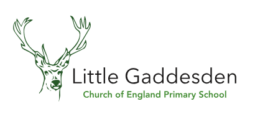Curriculum
Our approach to the National Curriculum hinges on our belief that all children are entitled to the widest possible range of learning experiences in practical, academic, social and spiritual spheres. This broad curriculum is balanced with the need to provide regular and continuous practice in basic skills. It is also organised to help develop a child’s autonomy, foster curiosity and provide enjoyment and interest. To create a love of learning and have the resilience, knowledge and skills for the next phase of their education.
The National Curriculum 2014
The new National Curriculum outlines what must be taught in Key Stages 1 and 2 (Years 1-6) in maintained state schools in England from September 2014. It provides details of children’s statutory curriculum entitlement in English, Mathematics and Science and across 10 further subject areas: Art and design, Computing, Design and technology, Geography, History, MFL (Modern Foreign Languages), Music, Physical Education, PSHE (Personal, Social and Health Education) and RE (Religious Education).
The requirements of the new national curriculum raise expectations of pupils’ learning and achievement, particularly in English and Maths. At Little Gaddesden we use a range of intervention programmes to meet these requirements, including the Sounds Write Programme and reference to White Rose for Maths. The website Curriculum area is intended to provide parents with information about these programmes and to show how the Little Gaddesden curriculum builds on the statutory requirements of the National Curriculum across all subject areas to provide a rich and distinctive learning experience for our children.
Classes and Curriculum
- Class 1 – Reception pupils – Early Years Foundation Stage
- Class 2 – Years 1 and 2 – Key Stage 1
- Class 3 – Years 3 and 4 – Lower Key Stage 2
- Class 4 – Years 5 and 6 – Upper Key Stage 2
We have four classes at Little Gaddesden School:
For Key Stages 1& 2 (classes 2 to 4), classes are organised as 2 combined year groups. Consequently, for most subjects, our curriculum follows a two-year rolling programme, ensuring children are receiving a broad curriculum. The exception to this is Music and Mathematics in Years 1 and 2 where the pupils are taught as single year groups. Our Curriculum is designed so that pupils have the opportunities to recall and revise their knowledge. Within each subject page you will see links to: the National Curriculum requirements; our planning overview – detailing our long term plans for each of the 2-year rolling programme; and our road maps which reflect the learning paths created by the 2-year programme.
As small school all our pupils have a plethora of opportunities in which to participate and personally develop. We are proud that throughout the school year we have events, such as our Christmas production and Shove Tuesday pancake races that involve every pupils in our school. Our children develop their leadership skills as responsible members of the school community through a variety of roles such as: Sports Leaders, Buddies, Collective Worship Ambassadors, Wellbeing Ambassadors, members of our Pupil Parliament, STEM Ambassadors.
Early Years Foundation Stage
The revised EYFS will be operational from September 2021 and therefore relevant to all children in Class 1 from that date.
Parents’ Guide to the Early Years Foundation Stage Framework
What does planning look like in the EYFS?
